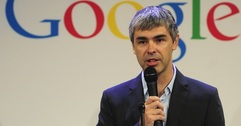Since then, Google has never failed to provide unique solutions to complex problems. Indeed, this ability is what sets apart the company from its rivals, and can be seen in almost all the projects run by Google X, the semi-secret lab that powers the company’s moonshot projects, including the ‘Driverless Car’ initiative. Let’s take a look at the core breakthrough which is helping these cars drive on their own through the highways of United States.
SUBTRACTION IS KEY
For starters, lots of building blocks had to be in place for the project to even kick-start. Without Google’s Maps and Street View in place, as we shall see, the project would have never worked. Take a look at the cars participating in this experiment. You will find that each of their rooftops is mounted with a spinning laser turret known as the lidar (light detection and ranging) unit. Tucked behind the sheet metal and glass of each car are cameras, radars, antennas, and GPS. Then, there's a large computer placed in the car boot.
The laser's 64 beams spin ten times per second, scanning 1.3 million points in concentric waves that begin eight feet from the car. It can spot even small objects 260 feet away. We can consider this data as a high-resolution live map (accurate to about 11 cm) of the car's surroundings. The radar has twice that range, but not the precision. The camera is good at identifying road signs, indicator lights, colours, and traffic lights. All three views are combined and colour-coded by the computer in the car boot.
The breakthrough thinking here is that for the Driverless Cars to know what to avoid, they don’t have to be aware of all elements on the highway. Static infrastructure is already available through Google Maps and Streetview. You have to cancel this out from the live map presented by the lasers, radars, and cameras in the cars. This subtraction of the static images from the live feed is done by the operating system of the Driverless Car project, known as Google Chauffeur. So the Driverless Cars are only tasked with avoiding collision with the components on the road which move, since it already knows the layout of the other permanent infrastructure. That’s another breakthrough thinking, and another feather on its cap for Google.
e.o.m.








 RSS Feed
RSS Feed
